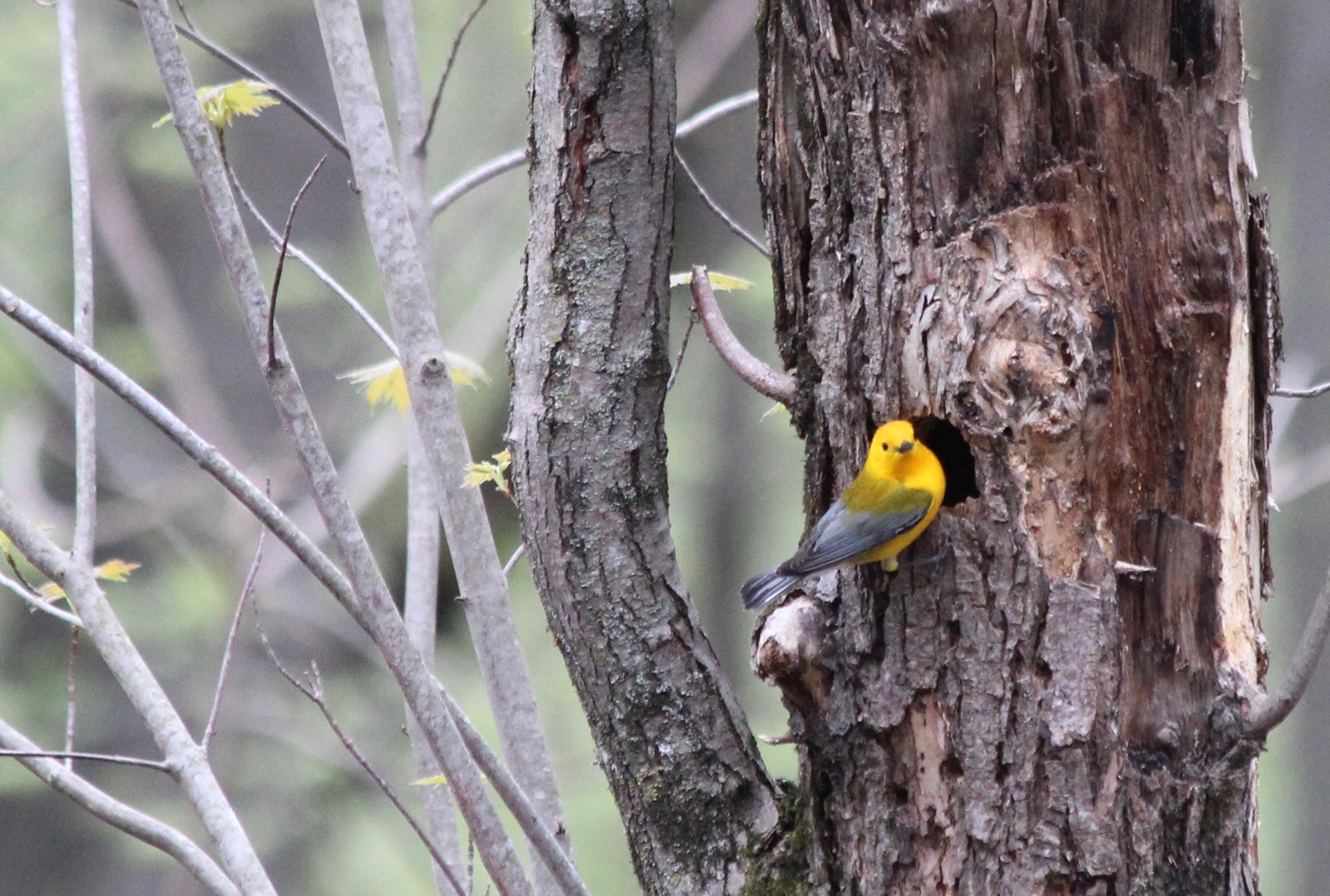
Astronomy
On Monday the 28th after sunset look for the planet Mars to the right of the crescent Moon. And on Wednesday the 30th look for the blue star Spica above the Moon. It’s in the constellation Virgo. Spica is the tenth brightest star in our night sky.

Birds
Turkey Vultures soar over the prairie and the river. Listen for Brown Thrashers and Indigo Buntings in the woods. It sounds like Thrashers are saying “drop-it, drop-it, cover-it-up,” while the call of the Indigo Bunting sounds like “fire, fire. Where? Where? Here, here. See it? See it?” And Gray Catbirds nest in trees and shrubs, but you may see them along the edges of the woods. They are gray birds with dark gray caps. Their most common call is a raspy mew that sounds rather like a cat.
Mammals
Deer have changed from their winter gray coats to summer red and bucks are growing antlers. Rabbits, like deer, are “crepuscular”, which means that they are active at dawn and dusk. Chipmunks are active in the daytime, or “diurnal”, and skunks are active at night, or “nocturnal”.
Amphibians and reptiles
Young toads are growing up! Watch for them hopping across paths as you hike near the water.
Insects
The three segments of a dragonfly or damselfly are called the “head”, which is where the eyes
are, the “thorax”, where the wings attach, and the “abdomen”, which is the part at the end which you
might want to call a “tail”. There are ten distinct segments in the abdomen. Dot-tailed Whitefaces
have white faces, and dots on their tail (really the abdomen), just like their name suggests.The
Common Whitetail has a grayish-white abdomen. And even though it’s just July it’s the start of the
flight period of the Autumn Meadowhawk. The Autumn Meadowhawk has the latest flight period of
any dragonfly in our area; if there isn’t a hard freeze you may see them flying into early November!
Plants
Look for Evening Primroses along the edges of the woods, and for Jewelweed near wet areas. It’s a favorite nectar plant of Swallowtail butterflies, Hummingbirds, and Bees. Jewelweed is sometimes called “touch-me-not” because when its seed pods are mature, they explode when you touch them, scattering the seeds far and wide. Water droplets may bead up on the leaves and look like small jewels in the sunlight, which is how it got the name of “jewelweed”.
On the prairie see if you can find Bee Balm (and a few bees!), Oxeyes, Showy Tick Trefoil, Prairie Onion, White Wild Indigo, and Prairie Groundsel.
Many people know that milkweed is the host plant for Monarch butterflies and their larva. Did you know that it’s also the host for the Milkweed Tussock Moth caterpillar, and a favorite of the Red Milkweed Beetle? The Red Milkweed Beetle is a member of the Long-Horned Beetle Family, a family that gets its name from their very long antennae.
Weather observations
Here are some weather observations from past years.
| Friday, July 25 | 2015: mid-80s and sticky |
| Saturday, July 26 | 2023: Thunderstorm overnight, then hot and in the 90s; 2013: blustery with rain showers, high in 60s |
| Sunday, July 27 | 2023: hot and muggy again, 90s, but evening thunderstorm brings cooler air; 2015: cloudy and in the 70s in the morning |
| Monday, July 28 | 2023: thunderstorm with ½” rain in late afternoon; 2014: sunny and pleasant, with a high of 77° |
| Tuesday, July 29 | 2023: 80s and pleasant; 2014: Sunny and in the 60s in the morning, rising to a high near 80°. |
| Wednesday, July 30 | 2023: 80s and sunny; 2010: cloudy and misty through day. |
| Thursday, July 31 | 2015: breezy and sunny, high In the low 80s |
Photo/Image credits
All photos copyright Nina Manzi, except:
- Alan G. Nelson, Dembinksy Photo Associates, MN Conservation Volunteer: Striped Skunk
- Dudley Edmondson, MN Conservation Volunteer: Indigo Bunting
- Dean Lokken: Chipmunk, Rabbit, Turkey Vulture, White-tailed Deer
- Bill Marchel, MN Conservation Volunteer: Brown Thrasher, Gray Catbird
































